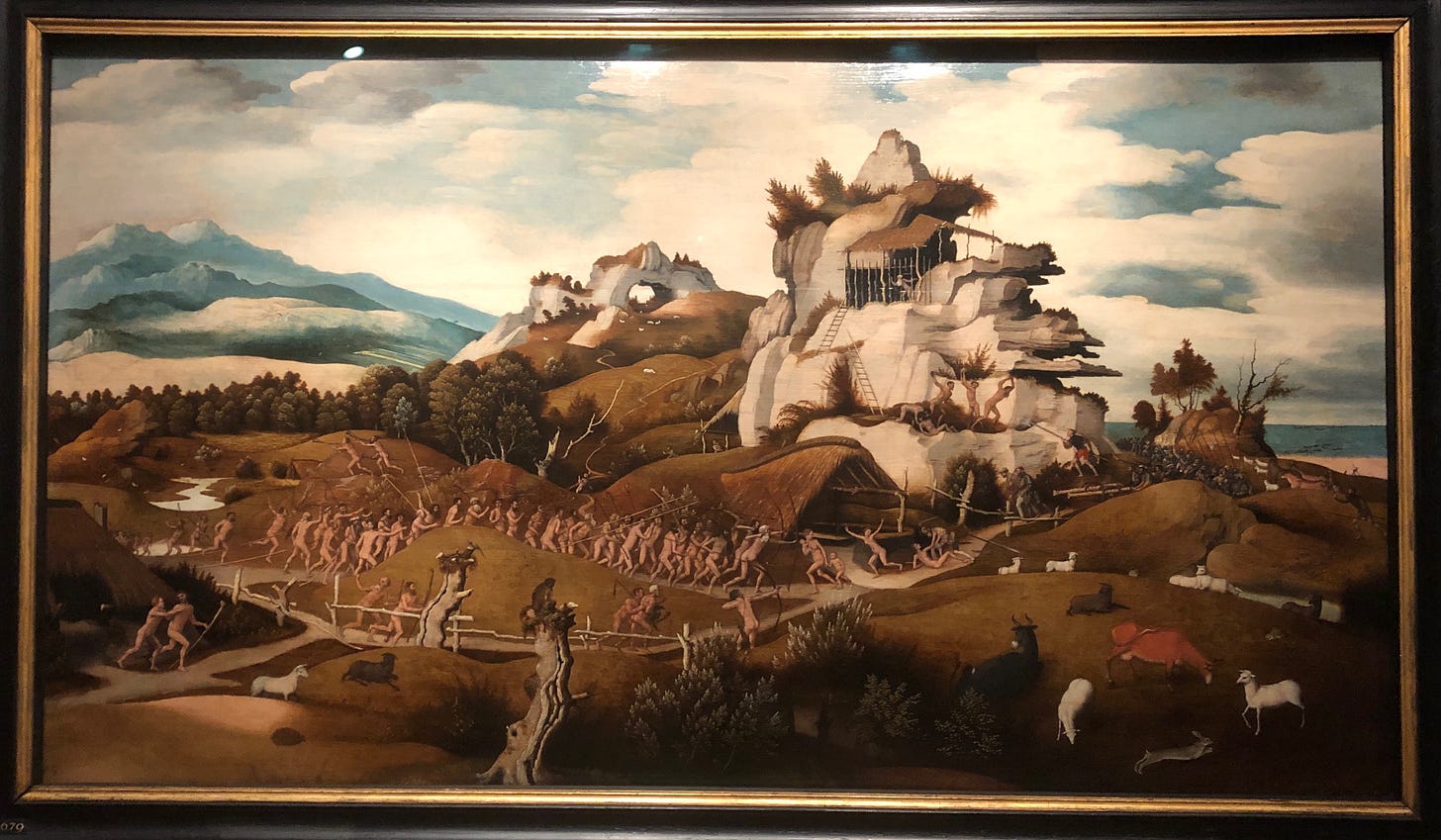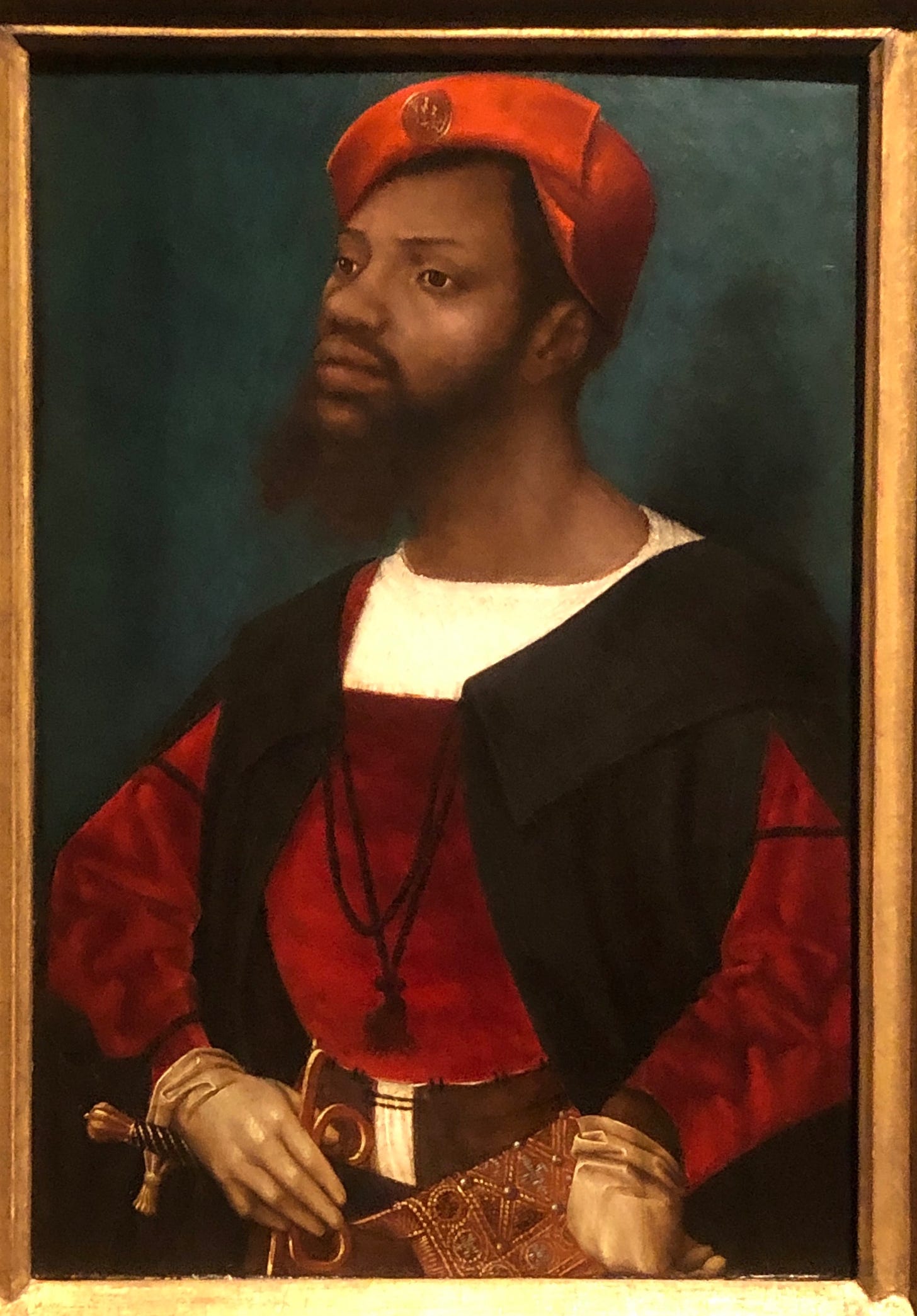Vermeer: How Not to Curate an Exhibition
In which I muse on a disturbing visit to the Rijksmuseum's Vermeer show.

This winter I received from the Rijksmuseum (Amsterdam) an email with the word “Vermeer” in the title. I deleted it, rolling my eyes. How predictable! Couldn’t they feature anything that wasn’t utterly canonical-parochial? (To be fair, they do, sometimes.)
Days later, excited chatter from art historians about a major show got me thinking: if there was an exhibition, I might as well see it. Vermeer paintings were pleasant enough, and I could get to the Rijksmuseum by train. As neither a paintings specialist nor a general visitor but rather as someone in between - a scholar of European visual culture of the sixteenth and seventeenth centuries - perhaps I was even an ideal visitor.
I booked a ticket. Days later, tickets were sold out.
The fanfare continued. The rich lawyer friend of a friend flew over from the US and became a Friend of the museum in order to see the exhibition without a ticket.
I went to the show.
Viewers enjoyed the additional ceremony of rock-concert wristbands and jetlag-proof signage in the form of a blue painted ribbon, an Ariadne’s thread snaking its way from the museum entrance to the exhibition. I had heard that the show was very crowded, so I swapped over to a 3M elastic-banded face-mask, resigned to the ensuing ridiculous hair afternoon.
Each gallery room was mostly bare - under-used space, I thought. Yet visitors around each Vermeer were six people deep on a March Monday: Mona Lisa crowds.
Murmured commentary and the earnest scuffles of visitors’ sneakers on wooden floors punctuated my thoughts. I was reminded of traipsing around the Vatican art galleries: much whooshing in one’s peripheral vision, much patient shuffling in order to see anything. One visitor had an arm in a cast.
The first paintings were early works - and, in this viewer’s opinion, they sucked. Overly saccharine, they exhibited totally different, flat brushwork, not the luminous effects for which Vermeer is famous. Then came rooms of paintings of, for the most part, people sitting in interiors. Seen together, in large, crowded rooms with mostly bare walls, I found the canvases parochial, even stifling.
The 28 paintings (out of his 35 canvases) were arranged in themes like “Gentleman Callers”, “Looking Inwards”, and “View of the World”. This was all very well for social historians, but for everyone else…. What was this, the 1950s?
The “Gazing Out” theme was a case in point: a bunch of sitters indoors, looking out of windows, sometimes with a map on the wall. Was this as outward-looking as Dutch culture ever got? That was the unexpected question that formed in my mind in response to this part of the show.
Many paintings showed women sitting indoors. This was a missed opportunity to re-think how such paintings are labelled. Why are so many women here called “girls”? In the painting (still) called “Officer and Laughing Girl”, the man is an adult with status, while the woman is denoted as merely a “girl”. She performs emotional labour, stroking his ego, laughing at a mediocre joke or an unpleasant innuendo, for all the viewer knows.
Was Vermeer great at painting light and windows in ways that draw in the viewer to look and look? Certainly. I also enjoyed getting close to paintings containing wall maps, as someone who has written about Netherlandish maps (alongside other maps).
But was there much here for anyone who wasn’t a scholar of the technical aspects of painting? I don’t think so. Unless you were deeply interested in brushwork, perspective, or lighting effects, there didn’t seem to be much to learn from - or even to enjoy.
This was a yesteryear show for formalist traditionalists. Label after label described painted scenes: subjects, layout, and painting technique. But these labels were as disconnected from viewers’ lives, concerns, and interests - visual or otherwise - as it was possible to get. Three years since the start of COVID, this was a visual lockdown with added crowds.
Perhaps this exhibition was a metonym for an arms-length engagement with the world beyond the home, an engagement with a superficial sprinkling of foreign flavour - but not too much, leaving the viewer wondering whether this cultural sphere is not a place that can stomach more than the most marginal of glances beyond its outwardly tidy-seeming interior world.
Will there be incremental additions to specialist knowledge about Vermeer’s technique? Very likely. For scholars of the visual, looking at and comparing lots of examples reveals insights and generates thoughts and questions that that cannot be imagined ahead of time (nor, consequently, written into social sciences-style grant applications, a mode that makes zero sense for the deep humanities - I have Many Thoughts about this).
But will this show rock the world of the typical visitor? I find I hard to see how it could - not unless you count confirming orthodoxies of the Western art canon, and reinforcing old-fashioned ideas about who and what deserves a monographic show, as world-rocking.
I had arrived with an impression of Vermeer as a maker of paintings I enjoyed. I left with the impression of Vermeer as a maker of charming but boring, even stifling, pictures. Yet the grand narrative of popular and national(ist) art history spins shows like this as reasons why someone (fortunately not me) might cross an ocean.
Many of these paintings would have been far more rewarding encountered on their own, quietly, in the repositories where they normally reside. So why this show?
Perhaps it was worth it for the Rijksmuseum for the money: not only did they sell out of tickets, but they sold memberships (with unrestricted exhibition entry) to people who could not otherwise get to see the show.
Where does the blockbuster effect for an artist come from? It takes a village, sometimes over centuries of engagement. Tracy Chevalier (author of Girl with a Pearl Earring), Scarlett Johansson (who played Griet, the servant and model for Vermeer’s most famous painting in the eponymous 1999 movie), Colin Firth (who played Vermeer), and screenwriter Olivia Hetreed and director Peter Webber (who turned Chevalier’s book into the movie) are part of the reason people attend Vermeer shows today.
Neither Vermeer nor the museums hosting such shows can pat themselves on the back for the blockbuster phenomenon.
After looking at every painting for as long as I could stand it, I stumbled out to the Northern Renaissance permanent galleries. They were quiet - all the better for appreciating the interiority of dainty paintings with vivid colours.
I felt a chill in my spine when I happened upon Jan Jansz Mostaert’s c.1535 landscape of a moment in the European invasion of the Americas. An enormous canvas (larger than most of the Vermeers), one can almost fall into the past here, enveloped by the scene of a Spanish attack on Indigenous inhabitants. According to the label, this is the earliest known painting of the conquest of the Americas.

Hanging next to the landscape was Mostaert’s c.1525-30 painting of a Black man who may have been Christophle le More, one of Emperor Charles V’s archers. The pilgrim’s badge on his cap identifies Le More as someone who went on a pilgrimage to Halle (in present-day Belgium).

This is, apparently, the earliest known European portrait of a man of African descent. (I am on the road and unable to check this; if anyone knows of earlier examples I would be delighted to hear more.) There is, to be sure, Albrecht Dürer’s 1504 rendition of King Balthazar, the Black magus, in his 1504 painting of the Adoration of the Magi, but that is not a portrait).
The contrast with my experience in the Vermeer show was immense. Museum-goers would do well to wander around permanent galleries of museums. There is fun to be had and wondrous art to see - in more peace and quiet than in temporary exhibitions, informative and magnificent though the latter can be.
One can’t fault a show for being popular. But I remain struck by the myopia and the missed opportunity of a physically gigantic exhibition space that dwarfed the 28 Vermeers in it, built around the blandest of themes that a high-school student could have scribbled on the back of an envelope in half an hour.
The Rijksmuseum’s own collection of contemporary Netherlandish painting, of Netherlandish paintings of portraits and interiors before and after Vermeer, and of paintings from beyond the Low Countries with which conversations about technique for representing light or interiority might have been had, contained enough works to fill the space and to thin out visitors crowding around 28 canvases. Seventeenth-century Mughal miniature paintings of courtly life might have helped viewers to think about the Vermeers in new and unexpected ways.
In sum, Vermeer’s paintings came off looking less, not more deserving, of attention when seen on their own, through the themes of this show. I was once a curator at the British Library. I expect better curation from an enormous national museum like the Rijksmuseum.
Resources
You can check out the Vermeers and the exhibition themes on the Rijksmuseum website here.
I have written about early modern Netherlandish cartography, alongside Spanish, Portuguese, German, French, and English print and manuscript cartography, and prints and travel accounts from across Western Europe, in Renaissance Ethnography and the Invention of the Human: New Worlds, Maps and Monsters (Cambridge UP, 2016; paperback 2017). For further information, please see CUP’s webpage here.




Thanks for this Surekha - it certainly suggests a disconnect between the need to monetise art around a singular figure and the complexity of its production. There was a small Vermeer exhibition (V and the Masters of Genre) in 2017 which placed his work amongst that of his contemporaries, showing how importance genre was in his paintings. Fascinated by the Mostaert paintings but worth noting too that this exhibition is also on https://www.rijksmuseumtwenthe.nl/rubriek/3433/en/sofonisba-anguissola
The Mostaert painting seems to be considered the earliest European painted portrait of a man of African descent, but the Rijksmuseum previously showed it alongside an earlier sketched portrait by Dürer: https://www.theguardian.com/artanddesign/2021/sep/28/earliest-european-portraits-of-african-men-on-show-together-for-first-time-durer-mostaert-rijksmuseum-amsterdam. Dürer also sketched an African woman during his visit to the Low Countries in 1520-1521: https://commons.wikimedia.org/wiki/File:Albrecht_D%C3%BCrer_-_The_Negress_Katherina_-_WGA07097.jpg. I hear you on the peculiarities of jam-packed crowds trying to appreciate rather small domestic-themed works of art, though!